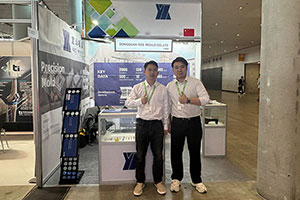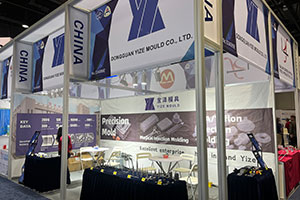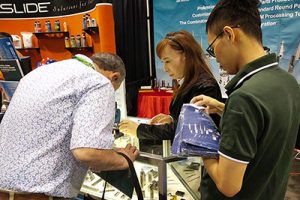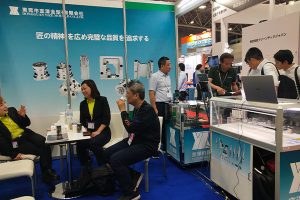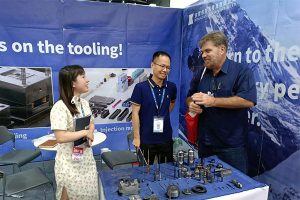An In-depth Analysis of Tungsten Carbide’s Corrosion Resistance
Tungsten carbide, a high-performance cemented carbide material, occupies a pivotal position in numerous industrial fields due to its unique physical and chemical properties. Corrosion resistance, as a key indicator for […]
Tungsten carbide, a high-performance cemented carbide material, occupies a pivotal position in numerous industrial fields due to its unique physical and chemical properties. Corrosion resistance, as a key indicator for evaluating tungsten carbide’s performance, attracts significant attention. This article will comprehensively analyze tungsten carbide’s corrosion resistance from multiple dimensions, including chemical composition, surface treatment, application environment, and experimental verification, and provide a clear conclusion.
I. Chemical Composition Lays the Foundation for Corrosion Resistance
Tungsten carbide’s corrosion resistance stems primarily from its unique chemical composition. It is refined through powder metallurgy processes using metal powders such as tungsten carbide (WC) and cobalt (Co). Tungsten carbide, as the primary hard phase, provides a natural corrosion-resistant barrier for tungsten carbide due to its high hardness and chemical stability. It is resistant to reactions with acidic, alkaline, and other corrosive media, ensuring tungsten carbide’s performance stability in harsh environments.
Onze fabriek business: carbide onderdelen, schimmel onderdelen, medische spuitgietmatrijzen, precisie spuitgietmatrijzen, teflon PFA spuitgieten, PFA buismontage. e-mail: [email protected],whatsapp:+8613302615729.
Cobalt, as the binder metal, not only enhances tungsten carbide’s toughness and impact resistance but also provides additional protection by forming a dense oxide film when exposed to corrosive media. This clever combination of chemical components enables tungsten carbide to excel in corrosion resistance.
II. Surface Treatment Enhances Corrosion Resistance
In addition to chemical composition, surface treatment is also crucial for enhancing tungsten carbide’s corrosion resistance. Coating technology, which applies corrosion-resistant metals or non-metals (such as nickel, chromium, titanium, etc.) to the tungsten carbide surface, creates a sturdy protective barrier that effectively isolates the corrosive media from direct contact with the tungsten carbide substrate.
Furthermore, spray coating technology is equally effective. The application of corrosion-resistant coatings such as polytetrafluoroethylene (PTFE) and epoxy resin not only covers microscopic defects on the tungsten carbide surface but also further enhances its corrosion resistance, extending its service life.
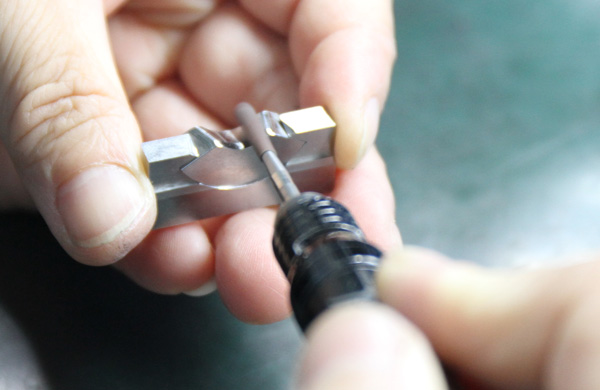
III. Application Environment Tests Corrosion Resistance
Tungsten carbide’s corrosion resistance must be validated in actual application environments. In industries where corrosive media are prevalent, such as chemicals, petroleum, and metallurgy, tungsten carbide is the preferred material for manufacturing corrosion-resistant equipment and components due to its excellent corrosion resistance. It maintains performance stability in acidic, alkaline, and other harsh environments, demonstrating strong environmental adaptability.
In non-corrosive media, although corrosion resistance may not be the primary consideration, tungsten carbide still performs well in various complex conditions due to its comprehensive performance advantages.
IV. Experimental Data Supports Corrosion Resistance Conclusions
Experiments are the sole criterion for testing truth. Through comparative tests of corrosion resistance between tungsten carbide materials and stainless steel materials used in watches, we found that tungsten carbide performed exceptionally well in artificial sweat corrosion and dilute nitric acid corrosion tests, outperforming stainless steel. This fully demonstrates tungsten carbide’s excellent corrosion resistance in various corrosive environments.
Simultaneously, performance tests on imported tungsten carbide alloy grades such as GTi30 also show that its excellent corrosion resistance is attributed to the reasonable combination of elements such as tungsten, iron, nickel, and molybdenum. The synergistic effect of these elements enables GTi30 to maintain performance stability in harsh chemical environments, further confirming tungsten carbide’s corrosion resistance.
V. Conclusion and Outlook
In summary, tungsten carbide fully demonstrates its excellent corrosion resistance through its unique chemical composition, advanced surface treatment technology, wide application environment adaptability, and experimental data support. In industrial fields requiring high corrosion resistance, tungsten carbide is undoubtedly an ideal material choice. In the future, with technological advancements and continuous process optimization, tungsten carbide’s corrosion resistance will be further enhanced, providing strong support for applications in more fields.


